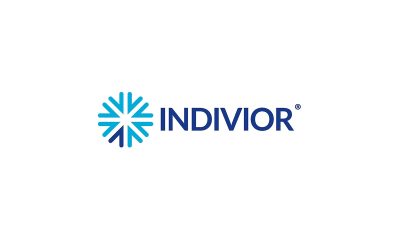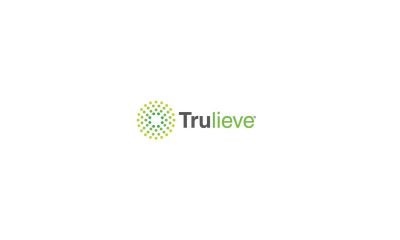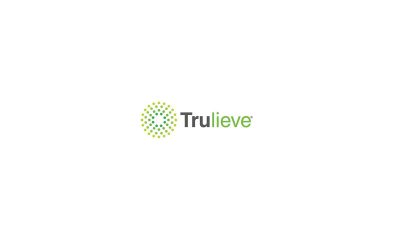/home/grassnews/public_html/wp-content/themes/zox-news/parts/post-single.php on line 153
">
Warning: Undefined array key 0 in /home/grassnews/public_html/wp-content/themes/zox-news/parts/post-single.php on line 153
Warning: Attempt to read property "cat_name" on null in /home/grassnews/public_html/wp-content/themes/zox-news/parts/post-single.php on line 153
Red Hat Opens the Linux Experience to Every Enterprise, Every Cloud and Every Workload with Red Hat Enterprise Linux 8
 Reading Time: 11 minutes
Reading Time: 11 minutes
From bare-metal servers and Linux containers to public and private
clouds, the world’s leading enterprise Linux platform drives new levels
of intelligence, automation and developer productivity, delivering a
more consistent business foundation
BOSTON – RED HAT SUMMIT–(BUSINESS WIRE)–Red Hat, Inc. (NYSE: RHT), the world’s leading provider of open source
solutions, today announced the general availability of Red Hat
Enterprise Linux 8, the operating system designed to span the breadth of
deployments across enterprise IT. For any workload running on any
environment, Red Hat Enterprise Linux 8 delivers one enterprise Linux
experience to meet the unique technology needs of evolving enterprises.
From deploying new Linux workloads into production to launching digital
transformation strategies, the next-generation enterprise is built on
top of the world’s
leading enterprise Linux platform.
Red Hat Enterprise Linux 8 is the operating system redesigned for the
hybrid cloud era and built to support the workloads and operations that
stretch from enterprise datacenters to multiple public clouds. Red Hat
understands that the operating system should do more than simply exist
as part of a technology stack; it should be the catalyst for innovation.
From Linux containers and hybrid cloud to DevOps and artificial
intelligence (AI), Red Hat Enterprise Linux 8 is built to not just
support enterprise IT in the hybrid cloud, but to help these new
technology strategies thrive.
As the importance of hybrid
cloud and multicloud
deployments grow, the operating system must evolve as well. According to IDC1,
70 percent of customers already deploy multicloud environments and 64
percent of applications in a typical IT portfolio today are based in a
cloud environment, whether public or private. Red Hat views the
operating system as the keystone to this IT innovation and more,
especially as Red Hat Enterprise Linux is poised to impact more than $10
trillion in global business revenues in 20192, according to a Red
Hat-sponsored IDC study.
Red Hat Enterprise Linux 8: Intelligent Linux for the hybrid cloud
For more than 15 years, Red Hat has helped enterprises innovate on
Linux, first in their datacenters and now across the hybrid cloud. As
datacenters grow in scale and scope and workload complexity builds, the
skills required to deploy and maintain Linux-based production systems
become increasingly critical. With the announcement of Red Hat
Enterprise Linux 8, this intelligence and expertise is now built-in to
Red Hat Enterprise Linux subscriptions by default with Red Hat
Insights, delivering Red Hat’s Linux expertise as-a-service.
Red Hat Insights helps proactively identify and remediate IT issues,
from security vulnerabilities to stability problems. It uses predictive
analytics based on Red Hat’s vast knowledge of open technologies to help
administrators avoid problems and unplanned downtime in production
environments.
Managing systems dispersed across a variety of on-premise and
cloud-based infrastructure can present a significant challenge to IT
organizations. Red Hat Smart Management, a layered add-on for Red
Hat Enterprise Linux, helps IT teams gain the benefits of hybrid cloud
computing while minimizing its inherent management complexities.
Combining Red Hat Satellite for on-premise systems management and cloud
management services for distributed Red Hat Enterprise Linux
deployments, Red Hat Smart Management provides rich capabilities to
manage, patch, configure and provision Red Hat Enterprise Linux
deployments across the hybrid cloud.
Red Hat Enterprise Linux 8: Blazing a faster path to modern
applications
To meet evolving business demands, IT organizations are looking to new
workloads, from artificial intelligence (AI) to the Internet-of-Things
(IoT), to drive competitive advantages in crowded marketplaces. Linux
provides the innovative muscle to power these differentiated services,
but only Red Hat Enterprise Linux 8 delivers this innovation along with
a hardened code base, extensive security updates, award-winning support
and a vast ecosystem of tested and validated supporting technologies.
Red Hat Enterprise Linux has always been known as a stable and secure
foundation for applications. However, in the past it was hard to get the
most up-to-date languages and frameworks that developers wanted without
compromising that stability. Red Hat Enterprise Linux 8 introduces Application
Streams – fast-moving languages, frameworks and developer tools are
updated frequently in this stream without impacting the core resources
that have made Red Hat Enterprise Linux an enterprise benchmark. This
melds faster developer innovation with production stability in a single,
enterprise-class operating system.
Red Hat Enterprise Linux 8: Introducing a world of opportunity for
everyone
Linux continues to be the number one operating system for developers
building the next generation of enterprise applications. As these
applications move into production, stability, enhanced security and
testing/certification on existing hardware and environments become
paramount needs. This shifts the onus from developers to operations
teams and, paired with the trend of Linux being looked
to as a primary platform for production applications, makes Linux
administration and management skills critical for modern datacenters.
Red Hat Enterprise Linux 8 is designed to lower the barrier to entry for
Linux, enabling greater accessibility for Windows administrators, Linux
beginners and new systems administrators without fear of the command
line.
Red Hat Enterprise Linux 8 abstracts away many of the deep complexities
of granular sysadmin tasks behind the Red Hat Enterprise Linux web
console. The console provides an intuitive, consistent graphical
interface for managing and monitoring Red Hat Enterprise Linux system,
from the health of virtual machines to overall system performance. To
further improve ease of use, Red Hat Enterprise Linux supports in-place
upgrades, providing a more streamlined, efficient and timely path for
users to convert Red Hat Enterprise Linux 7 instances to Red Hat
Enterprise Linux 8 systems.
Red Hat Enterprise Linux 8 also includes Red Hat Enterprise Linux
System Roles, which automate many of the more complex tasks around
managing and configuring Linux in production. Powered by Red Hat Ansible
Automation, System Roles are pre-configured Ansible modules that enable
ready-made automated workflows for handling common, complex sysadmin
tasks. This automation makes it easier for new systems administrators to
adopt Linux protocols and helps to eliminate human error as the cause of
common configuration issues.
Red Hat Enterprise Linux: Enabling the world of possibilities without
sacrificing security
IT innovation is rooted in open source, with Linux often serving as the
catalyst for major advancements in enterprise technology, from Linux
containers and Kubernetes to serverless and AI. Backed by a more secure,
hardened open source supply chain, Red Hat Enterprise Linux 8 helps pave
the way for IT organizations to adopt production-ready innovation by
deploying only the necessary packages for specific workloads. This
enhances the adoption of emerging technologies while helping to minimize
potential risk.
To enhance security, Red Hat Enterprise Linux 8 supports the OpenSSL
1.1.1 and TLS 1.3 cryptographic standards. This provides access to
some of the strongest, latest standards in cryptographic protection that
can be implemented system-wide via a single command, limiting the need
for application-specific policies and tuning.
With cloud-native applications and services frequently driving digital
transformation, Red Hat Enterprise Linux 8 delivers full support for the
Red Hat container toolkit. Based on open standards, the toolkit
provides technologies for creating, running and sharing containerized
applications. It helps to streamline container development and
eliminates the need for bulky, less secure container daemons.
Every datacenter. Every cloud. Every application.
Red Hat Enterprise Linux 8 drives a thriving partner ecosystem, as is
expected of Red Hat Enterprise Linux, encompassing thousands of
certified applications, Linux container images, hardware configurations
and cloud providers. Building on the deep collaborations forged by Red
Hat with other IT leaders and through extensive testing, Red Hat
Enterprise Linux 8 drives added value for specific hardware
configurations and workloads, including the Arm and POWER architectures
as well as real-time applications and SAP solutions.
Red Hat Enterprise Linux 8 forms the foundation for Red Hat’s entire
hybrid cloud portfolio, starting with Red Hat OpenShift Container
Platform 4 and the upcoming Red Hat OpenStack Platform 15. Also built on
Red Hat Enterprise Linux 8 is the forthcoming Red Hat Enterprise Linux
CoreOS, a minimal footprint operating system designed to host Red Hat
OpenShift Container Platform deployments.
Red Hat Enterprise Linux 8 is also broadly supported as a guest
operating system on Red Hat hybrid cloud infrastructure, including Red
Hat OpenShift 4, Red Hat OpenStack Platform 15 and Red Hat
Virtualization 4.3.
The launch of Red Hat Enterprise Linux 8 also coincides with the general
availability of the Red
Hat Universal Base Image, a userspace image derived from Red Hat
Enterprise Linux for building Red Hat certified Linux containers. The
Red Hat Universal Base Image is available to all developers with or
without a Red Hat Enterprise Linux subscription, providing a more secure
and reliable foundation for building enterprise-ready containerized
applications. Applications built with the Universal Base Image can be
run anywhere with the benefits of the Red Hat Enterprise Linux life
cycle and support from Red Hat when run on Red Hat Enterprise Linux or
Red Hat OpenShift Container Platform.
Press webcast
Red Hat will host a press conference live from Red Hat Summit at 11 a.m.
EDT on Wednesday, May 8. Following remarks, press and analysts are
invited to participate in a live question and answer session.
To register for the press conference or view the replay after the event,
visit https://onlinexperiences.com/Launch/QReg/ShowUUID=45D50AF9-7E2C-4F8C-8606-B85EBDA927AC
Supporting Quotes
Paul Cormier, president, Products and Technologies, Red Hat
“Over
the past two decades, we’ve seen Linux grow from a niche operating
system to a default for enterprise datacenters. Red Hat Enterprise Linux
has been at the forefront of this evolution, supporting nearly every
workload and enterprise IT environment that our partners and customers
can conceive. Red Hat Enterprise Linux 8 continues this work, but
delivers more than just production-ready Linux; it provides a catalyst
for innovation at cloud-scale. ”
Stefanie Chiras, vice president and general manager, Red Hat
Enterprise Linux, Red Hat
“Innovation and Linux are inseparable
– from building the Internet’s backbone to forming the first neurons of
AI, Linux drives IT’s present and future. Red Hat Enterprise Linux 8
embraces the role of Linux as IT’s innovation engine, crystallizing it
into an accessible, trusted and more secure platform. Spanning the
entirety of the hybrid cloud, the world’s leading enterprise Linux
platform provides a catalyst for IT organizations to do more than simply
meet today’s challenges; it gives them the foundation and tools to
launch their own future, wherever they want it to be.”
Fabio Martinez, senior manager, Architecture & Global Deployment, BBVA
“As
we work to digitally transform our company to provide more services
faster to our customers, we still need to have a stable, more secure
operating system underpinning our IT environment. Red Hat Enterprise
Linux 8 emphasizes providing innovation along with hardened code and
security updates, key characteristics for us as we build our
cloud-native strategy with Red Hat’s hybrid cloud technologies,
including Red Hat OpenShift Container Platform.”
Jim Nauer, IT engineer, Case Western Reserve University
“Red
Hat Enterprise Linux 8 Application Streams will allow us to provide our
researchers an OS platform with not only an enterprise support
lifecycle, but also access to up-to-date languages and tools in a way
that interoperates easily with third-party source code.”
Tibor Incze, technical lead, Red Hat Enterprise Linux, Datacom
Systems Ltd.
“The capacity for Red Hat Enterprise Linux 8 to
not only run multiple versions of the same application or database on a
specific operating system but to also have a clear and efficient way to
manage them is a significant benefit to Datacom and our customers. As we
continue to execute on our internal DevOps strategy, we’re also pleased
to see improved container capabilities in the operating system and
extensive automation, all factors that will help us bring differentiated
services to our end users.”
Kevin Ichhpurani, corporate vice president, Partners Ecosystem,
Google Cloud
“Google Cloud and Red Hat are deepening our
collaboration to enable enterprise-grade solutions for customers with
the availability of Red Hat Enterprise Linux 8 on Google Cloud. We’re
excited to bring together our innovative technologies and services to
help even more businesses gain the benefits of cloud.”
Arvind Krishna, senior vice president, Cloud and Cognitive Software,
IBM
“As companies enter the next phase of their cloud journey,
they need a hybrid cloud strategy that incorporates their own data
centers with multiple private and public clouds in an open and secure
way. IBM and Red Hat have been working together for more than 20 years
to drive innovation through open source, first with IBM serving as an
early supporter of Linux, helping to develop and grow it for the
enterprise, and more recently to bring Kubernetes and hybrid cloud
solutions to customers.”
Ashish Nadkarni, group vice president, Infrastructure Systems,
Platforms and Technologies Group, IDC
“Enterprises need to
build and modernize their infrastructure upon a more secure, stable,
high-performing platform. Red Hat Enterprise Linux is the foundation for
the enterprise hybrid cloud, designed to scale to meet the needs of
organizations today and tomorrow with the same user experience
regardless of the underlying infrastructure.”
John Gossman, distinguished engineer, Microsoft Azure
“We
have seen growth in applications being deployed using Red Hat Enterprise
Linux on Azure, including Microsoft SQL Server, for cloud-native,
hybrid, and cloud migration scenarios. We’re excited to see what
customers will create with Red Hat Enterprise Linux 8 on Azure with
continued integrated support from Microsoft and Red Hat, as well as the
operating system’s new capabilities to build applications for workloads
like AI.”
Arlen Shenkman, executive vice president, Global Business Development
and Ecosystems, SAP
“Red Hat Enterprise Linux 8 for SAP
Solutions offers high availability capabilities, which are important for
SAP workloads, and downtime is unacceptable for business critical
applications such as S/4HANA. For more than two decades, we’ve worked
with Red Hat on maintaining a stable, open foundation for SAP
applications, helping our customers make smarter decisions, faster,
across the hybrid cloud.”
Jason Beard, senior Linux administrator, Stream (Stream Energy)
“The
energy market is complex and highly competitive, especially when it
comes to being able to deliver updated information as quickly as
possible to our customers. As an existing Red Hat Enterprise Linux user,
the in-place upgrade capabilities of Red Hat Enterprise Linux 8 provide
an opportunity for us to continue answering customer demand without
taking systems offline to upgrade the operating system. We are also very
interested in the container capabilities presented by Red Hat Enterprise
Linux 8, especially as our development environment continues to evolve
to drive additional business value.”
Additional Resources
-
Read more about Red
Hat Enterprise Linux 8 -
Find out how Red
Hat Services and Red Hat Consulting can help get the most out of
Red Hat Enterprise Linux 8 -
Read about how Red
Hat’s partner ecosystem is supporting Red Hat Enterprise Linux 8 -
Learn more about Red
Hat Summit -
Follow @RedHatSummit
or via the hashtag #RHSummit
on Twitter -
Become a fan of Red
Hat Summit on Facebook
Connect with Red Hat
-
Learn more about Red
Hat -
Get more news in the Red
Hat newsroom -
Read the Red
Hat blog -
Follow Red
Hat on Twitter -
Join Red
Hat on Facebook -
Watch Red
Hat videos on YouTube -
Follow Red
Hat on LinkedIn
About Red Hat, Inc.
Red
Hat is the world’s leading provider of enterprise open source
software solutions, using a community-powered approach to deliver
reliable and high-performing Linux, hybrid cloud, container, and
Kubernetes technologies. Red Hat helps customers integrate new and
existing IT applications, develop cloud-native applications, standardize
on our industry-leading operating system, and automate, secure, and
manage complex environments. Award-winning
support, training, and consulting services make Red Hat a trusted
adviser to the Fortune 500. As a strategic partner to cloud
providers, system integrators, application vendors, customers, and open
source communities, Red Hat can help organizations prepare for the
digital future.
Forward-Looking Statements
Certain statements contained in this press release may constitute
“forward-looking statements” within the meaning of the Private
Securities Litigation Reform Act of 1995. Forward-looking statements
provide current expectations of future events based on certain
assumptions and include any statement that does not directly relate to
any historical or current fact. Actual results may differ materially
from those indicated by such forward-looking statements as a result of
various important factors, including: risks related to our pending
merger with International Business Machines Corporation, the ability of
the Company to compete effectively; the ability to deliver and stimulate
demand for new products and technological innovations on a timely basis;
delays or reductions in information technology spending; the integration
of acquisitions and the ability to market successfully acquired
technologies and products; risks related to errors or defects in our
offerings and third-party products upon which our offerings depend;
risks related to the security of our offerings and other data security
vulnerabilities; fluctuations in exchange rates; changes in and a
dependence on key personnel; the effects of industry consolidation;
uncertainty and adverse results in litigation and related settlements;
the inability to adequately protect Company intellectual property and
the potential for infringement or breach of license claims of or
relating to third party intellectual property; the ability to meet
financial and operational challenges encountered in our international
operations; and ineffective management of, and control over, the
Company’s growth and international operations, as well as other factors
contained in our most recent Annual Report on Form 10-K (copies of which
may be accessed through the Securities and Exchange Commission’s website
at www.sec.gov),
including those found therein under the captions “Risk Factors” and
“Management’s Discussion and Analysis of Financial Condition and Results
of Operations”. In addition to these factors, actual future performance,
outcomes, and results may differ materially because of more general
factors including (without limitation) general industry and market
conditions and growth rates, economic and political conditions,
governmental and public policy changes and the impact of natural
disasters such as earthquakes and floods. The forward-looking statements
included in this press release represent the Company’s views as of the
date of this press release and these views could change. However, while
the Company may elect to update these forward-looking statements at some
point in the future, the Company specifically disclaims any obligation
to do so. These forward-looking statements should not be relied upon as
representing the Company’s views as of any date subsequent to the date
of this press release.
Red Hat, Red Hat Enterprise Linux, OpenShift, Ansible and CoreOS are
trademarks or registered trademarks of Red Hat, Inc. or its subsidiaries
in the U.S. and other countries. Linux® is the registered trademark of
Linus Torvalds in the U.S. and other countries. The OpenStack Word Mark
is either a registered trademark/service mark or trademark/service mark
of the OpenStack Foundation, in the United States and other countries,
and is used with the OpenStack Foundation’s permission. Red Hat is not
affiliated with, endorsed or sponsored by the OpenStack Foundation, or
the OpenStack community.
1 IDC, Market
Analysis Perspective: Worldwide Core and Edge Computing Platforms,
Sept. 2018
2 IDC study, sponsored by Red Hat, The
Economic Impact of Red Hat Enterprise Linux: Trillions — Yes, Trillions
of Dollars, May 7, 2019
Contacts
John Terrill
Red Hat, Inc.
+1-571-421-8132
[email protected]

Warning: Undefined array key 0 in /home/grassnews/public_html/wp-content/themes/zox-news/parts/post-single.php on line 493
Warning: Attempt to read property "cat_ID" on null in /home/grassnews/public_html/wp-content/themes/zox-news/parts/post-single.php on line 493
Cannabis
Sannabis, Inc. (OTC: USPS) Announces First Shipment of Cannabis Essential Oil from Colombia to U.S. to Fill First Order, as the DEA Re-Classifies Marijuana from Schedule I to Schedule III
Humboldt
Humboldt Seed Company partners with Apollo Green to bring California cannabis genetics to the global marketplace
Apollo Green to distribute Humboldt Seed Company clonal cannabis genetics to Germany, Portugal and Australia
SAN FRANCISCO, April 30, 2024 /PRNewswire/ — Humboldt Seed Company (HSC), California’s leading cannabis seed producer, has announced a partnership with Canadian-based Apollo Green to make eight breeder cuts available to researchers, licensed commercial cultivators and home growers in legal markets worldwide. This first-to-market clonal genetics release is a significant milestone and will expand access to distinctive, high-quality cannabis genetics in both established and emerging global markets including Germany, Portugal and Australia.
The curated, breeder-verified selection includes pioneering triploid genetics, such as OG Triploid and Donutz Triploid alongside the legendary cult classic Blueberry Muffin. Also available are All Gas OG with a THC content of 21% and four high-THC strains in the 30-35% range: Golden Sands, Guzzlerz, Jelly Donutz and Orange Creampop. These selections represent the top .01% from HSC’s extensive California pheno-hunting program.
Exports will begin in May under Apollo Green’s Canadian federal cannabis license. All shipments have Canadian phytosanitary certification, ensuring plants have been inspected, and are clean and free of pests.
“Access for all to quality genetics has been our core focus since the beginning,” said HSC Co-founder and Chief Science Officer, Benjamin Lind. “Our science-based approach to breeding aligns perfectly with Apollo Green’s high standards and we are excited to be able to extend these hand-selected cuts to a wider audience, especially at this pivotal time where we’re seeing positive regulatory changes globally.”
Oisin Tierney, Apollo Green Director of Business Development, said, “California has long been recognized for setting industry standards, and we are proud to play a role in bringing these esteemed genetics to cultivators worldwide. The triploids are especially noteworthy in terms of the unprecedented potential for enhanced plant vigor, higher yields, shorter flowering times and superior returns for solventless extraction.”
About Humboldt Seed Company
Established in 2001, Humboldt Seed Company is a Northern California heritage brand providing quality cannabis genetics to commercial cultivators and home growers in legalized states across the U.S. and international markets including Spain, Canada, Jamaica, South Africa, Colombia, France, Portugal, Greece, the UK, Malta and Thailand. With a focus on environmental and social justice, they combine traditional breeding and modern scientific practices in their strain development program. They have served the cannabis community for over two decades.
For more information visit https://humboldtseedcompany.com/.
About Apollo Green
Licensed since 2019, Apollo Green is Canada’s leader in cannabis genetics. The company’s mission is to provide an ever-growing bank of seeds and clones to medical patients and recreational consumers. Apollo Green provides clean, trusted cannabis seeds and clones, which are backed by the foremost tissue culture technology to reduce risks, costs and time-to-market for licensed producers around the world. Apollo Green is passionate about cannabis genetics.
For more information visit https://apollogreen.com/.
Media contact
Jaana Prall
[email protected]
Logo – https://mma.prnewswire.com/media/2328955/Humboldt_Seed_Company_Logo.jpg
![]() View original content:https://www.prnewswire.co.uk/news-releases/humboldt-seed-company-partners-with-apollo-green-to-bring-california-cannabis-genetics-to-the-global-marketplace-302131618.html
View original content:https://www.prnewswire.co.uk/news-releases/humboldt-seed-company-partners-with-apollo-green-to-bring-california-cannabis-genetics-to-the-global-marketplace-302131618.html

Cannabis
Technological Advancements in Breathalyzers Drive Market Growth and Enhance Road Safety
-

 Innocan2 weeks ago
Innocan2 weeks agoInnocan Pharma Initiates FDA Approval Process for Liposome Injection Therapy for Chronic Pain
-

 Curaleaf2 weeks ago
Curaleaf2 weeks agoCuraleaf Completes Acquisition of Northern Green Canada
-

 Cannabis2 weeks ago
Cannabis2 weeks agoCannabis Capsule Global Analysis Report 2024: Market to Reach $79.2 Billion in 2028 – Forecast to 2033 Featuring GW Pharmaceuticals, Trulieve Cannabis, Green Thumb Industries, Tilray, Columbia Care
-
Cannabis6 days ago
Technological Advancements in Breathalyzers Drive Market Growth and Enhance Road Safety
-

 SCHWAZZE7 days ago
SCHWAZZE7 days agoSchwazze Sets First Quarter 2024 Conference Call for May 15, 2024 at 5:00 p.m. ET
-
Cannabis6 days ago
Bay Area Social Equity Operator Launches the Purple Raina Balm Wand 1:1, an Inclusive Multipurpose Cannabis Topical
-
Humboldt6 days ago
Humboldt Seed Company partners with Apollo Green to bring California cannabis genetics to the global marketplace
-
Cannabis4 days ago
Sannabis, Inc. (OTC: USPS) Announces First Shipment of Cannabis Essential Oil from Colombia to U.S. to Fill First Order, as the DEA Re-Classifies Marijuana from Schedule I to Schedule III















